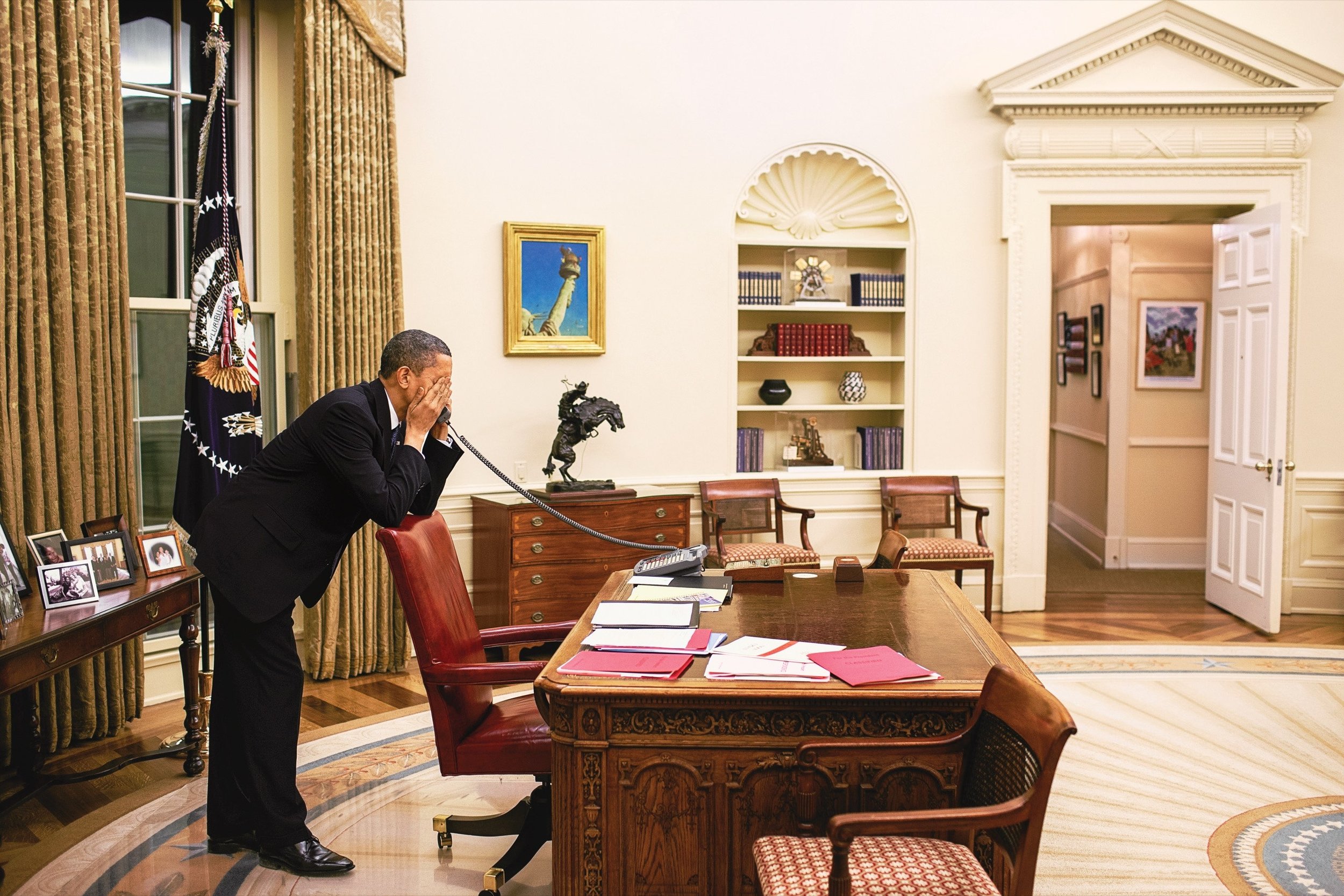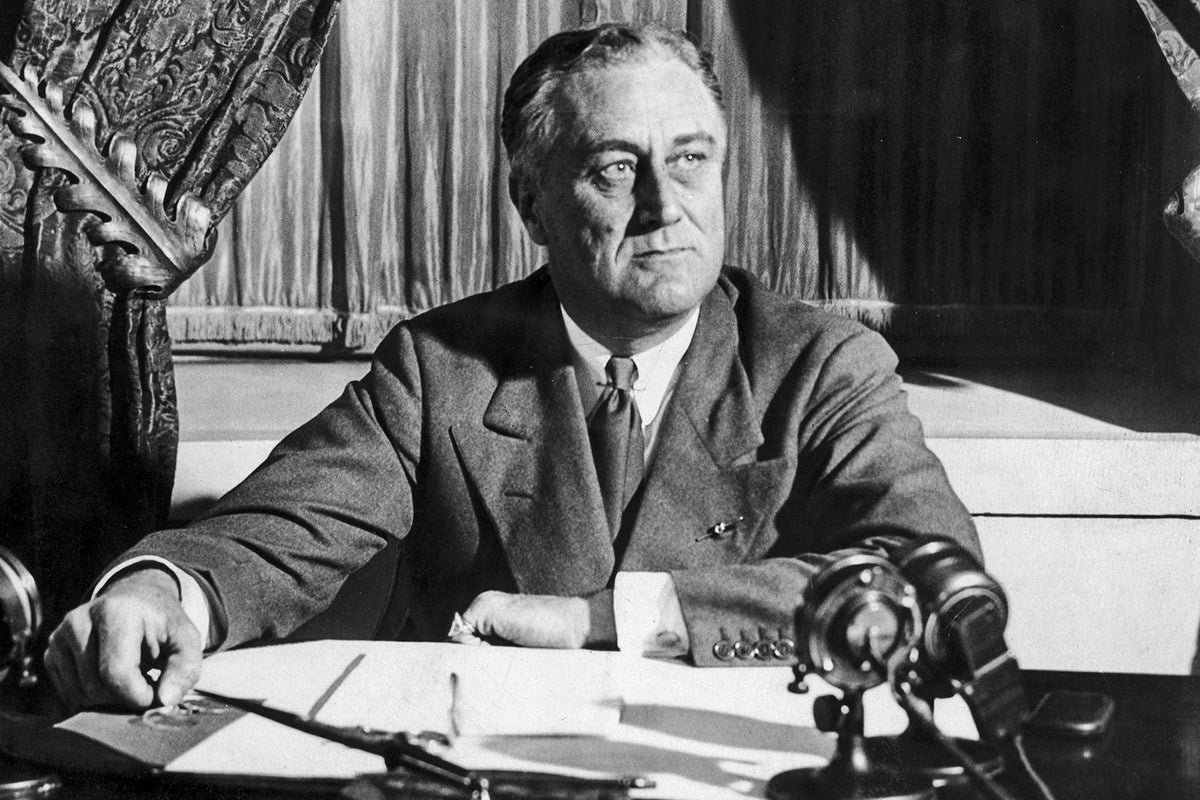Top Five Most Influential Presidents for the U.S. Labor Economy
This President’s Day, we’re looking back at some of the most influential and impactful policies and programs instituted by American presidents and their administrations. While we realize this list isn’t comprehensive, it’s a great way to both educate and remind ourselves of key pieces of legislation that have set the tone for our modern day workforce protections, and we’re looking forward to seeing continued attention and creative solutions on addressing our domestic labor market from future administrations in the years to come.
We hope you enjoy our list, and let us know what you feel we may have missed!
5) Barack Obama
While we could comment on several labor policies from the Obama administration, it’s the fair pay legislation enacted in the early days of President Obama’s first term that establishes him as an impactful contributor to America’s labor economics. Obama had been in office a mere eight days when he signed the Lilly Ledbetter Fair Pay Act, making it easier for women to sue employers for equal pay. A direct response to the 2007 Supreme Court case of Ledbetter v. Goodyear Tire & Rubber Co, the act amends Title VII of the Civil Rights Act of 1964 and states that the 180-day statute of limitations for filing an equal-pay lawsuit regarding pay discrimination resets with each new paycheck affected by that discriminatory action.
As the first law passed in office, this set the tone of the Obama administration as a champion of actions to expand rights and protections for American workers, diversifying the American workforce.
Other prominent initiatives of his eight year presidency included expanding minimum wages and overtime pay for home health workers, and outlining classification guidelines in an attempt to stop employers from categorizing employees as independent contractors. The Affordable Care Act, arguably Obama’s most recognized and controversial initiative, supported a growing gig-economy and freelancers by providing those either ineligible or not covered by employer-sponsored health insurance the opportunity to buy coverage through online marketplaces.
Without the support of Congress on several of these initiatives, the Obama administration used an unprecedented level of executive orders to change workplace and employment-related regulations for federal employees and contractors, setting the tone for a hopeful adoption of policies from private-sector employers.
4) Dwight D. Eisenhower
While it’s perhaps easy to balk at this presidential inclusion due to pesky potholes and seemingly endless construction, the development of our current-day interstate highway system can be attributed to President Dwight D. Eisenhower. Eisenhower served as a military officer on the Western front during World War II, and was impressed by the German autobahns, garnering the inspiration to build something equally effective and sophisticated for the United States. Upon taking office in 1953, Eisenhower’s administration revived this interest in constructing a national interstate system, developing a series of policies and developments that would be signed into effect in June 1956, as a $25 billion Federal Aid-Highway Act, sanctioning a highway system (later named the Dwight D. Eisenhower System of Interstate and Defense Highways) of 41,000 miles of highways. The plans for this infrastructure included strict standards, with nearly 2,000 miles of already-completed toll roads, and an intention of completion by 1975, or within nearly 20 years.
As he garnered support from Congress, Eisenhower stated four key principles of its construction, still existing today: to reduce fatalities and injuries; to keep the roads maintained and in good condition to reduce vehicle operating costs; to permit a means of quick evacuation, military mobilization, and movement of goods; and to manage congestion.
During Eisenhower’s pitching of the interstate system to Congress, he justified the project’s cost as a post-war necessity to fortifying America’s national security, but the administration downplayed the project’s most valuable impact – the effect it would have on the U.S. economy in the near and long term. Economist Daniel Leff estimates that the output effects of building the interstate highway system has had a long-run relative multiplier of 1.8, meaning that every dollar spent on interstates has led to $1.80 of additional economic output. Right before the project’s completion in 1991, the FHWA issued a final cost estimate of the interstate system at $128.9 billion, adjusted for inflation. Assuming the long-run multiplier is 1.8, the interstate highway system has generated over $283 billion in additional economic output.
3) Theodore Roosevelt
During his first term (1901 – 1904), President Roosevelt began promoting a collection of progressive policies in an attempt to course correct the negative effects of late 19th century industrialization troubles, improving the quality of life for Americans, particularly factory workers and miners. These policies are popularly referred to as the Square Deal – a set of legislation measures to prevent further labor abuses, improve workplace safety, control corporations, protect the natural landscape, and care for the public welfare – and are the foundation for current-day standards, such as the eight hour workday, standards for wages, and prohibitions on involuntary labor.
The largest chunk of policies within the Square Deal covered oppressive labor conditions and unregulated corporations that began to develop during the period of intense industrialization in the late 19th century. Several of these policies sought to regulate trade and manufacturing to ensure proper governance and controls to keep business fair and equitable, while protecting them against unreasonable labor unions.
Another major influence of the Square Deal policies was the protection of women and children in the workplace. As a reminder, child labor was popular and perfectly legal – and while it wasn’t formally restricted until 1938, Roosevelt mentioned the troubles of child labor and policies to improve such conditions in each of his State of the Union addresses during this first term, as this was a significant area of public interest and pressure. Under Roosevelt’s influence in 1907, Congress chartered the National Child Labor Committee, which had existed since 1904, but the formal charter gave the committee federal authority to investigate abuses and exploitations. Additionally, several policies under the Square Deal imposed new safety regulations to protect the welfare of infrastructure workers and physical laborers, such as railroad workers, sailors, and miners.
2) Lyndon B. Johnson
The president who took an unfortunate emergency oath of office following Kennedy’s assassination in 1963, holds the distinction of being one of a small group of U.S. presidents to serve all elected offices at the federal level. While President Johnson is a controversial figure due to his commentary and language choices of Black Americans, he is also a recognized champion for key Civil Rights legislation, holding America accountable to its Black citizens for the first time in its democratic history.
Of course, this monumental legal effort wasn’t Johnson’s alone, as mid-century domestic relations set the stage for the mass amounts of Civil Rights legislation enacted under the Johnson presidency. In 1961, President John F. Kennedy’s Executive Order (E.O.) 10925 used affirmative action for the first time by instructing federal contractors to take “affirmative action to ensure that applicants are treated equally without regard to race, color, religion, sex, or national origin.”
In 1964, President Lyndon B. Johnson signed the Civil Rights Act of 1964 into law. This landmark legislation prohibited employment discrimination by large employers (categorized at over 15 employees), whether or not they have government contracts. In the same legislation, Johnson and team also established the Equal Employment Opportunity Commission (EEOC), to administer and enforce Civil Rights laws against workplace discrimination.
A year later, Johnson issued E.O. 11246, requiring all government contractors and subcontractors to take affirmative action to expand job opportunities for minorities, establishing the Office of Federal Contract Compliance (OFCC) in the Department of Labor to administer the order. In 1967, E.O. 11246 was amended by Johnson to include affirmative action for women, kicking off the requirement for Federal contractors to make good-faith efforts to expand employment opportunities for women and minorities.
1) Franklin Delano Roosevelt
Unsurprisingly, we’ve chosen President Franklin Delano Roosevelt (FDR) as the most impactful executive office contributor to America’s domestic labor economics. (And yes, we do realize he has a bit more time than most presidents, with his three term administration…). Still, upon taking office in 1933, Roosevelt went straight to work on implementing reform policies he believed would stabilize the post-war economy, providing ample jobs and substantial financial relief to the American people. During FDR’s first 100 days in office, his administration enacted several important pieces of legislation, including the Glass-Steagall Act and the Homeowners Loan Act, while also developing and instituting various job creation schemes, such as the Federal Emergency Relief Act (FERA) and the Civilian Conservation Corps (CCC).
We could go into countless bullets on the benefits of Roosevelt’s New Deal legislative program, but will try to keep it concise with pointing out some obvious choices, most relating to the “Second” New Deal (of 1935 – 1936): the National Labor Relations Act, the Works Progress Administration relief program, the Social Security Act, the Fair Labor Standards Act of 1938.
During his campaign in 1932, Roosevelt deemed the task he faced was, “the soberer, less dramatic business of administering resources and plants already in hand…of distributing wealth and products more equitably.” The Roosevelt administration’s New Deal policies established the tone and implemented several key regulations through a massive national effort to reduce income inequality in America.
As to the impact and victory of reviving an economy in crisis, the New Deal is still considered by many as a questionable, low-impact effort at best. But while economists contest the impact of FDR’s legislative policies, several of the reforms and programs from the New Deal, such as Social Security unemployment insurance, and agricultural subsidies, continue to fuel labor economics in current day. If nothing else, FDR’s legacy from the New Deal legislative program is the increased equality and attention to public welfare for American citizens.




